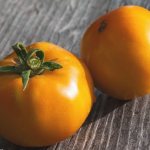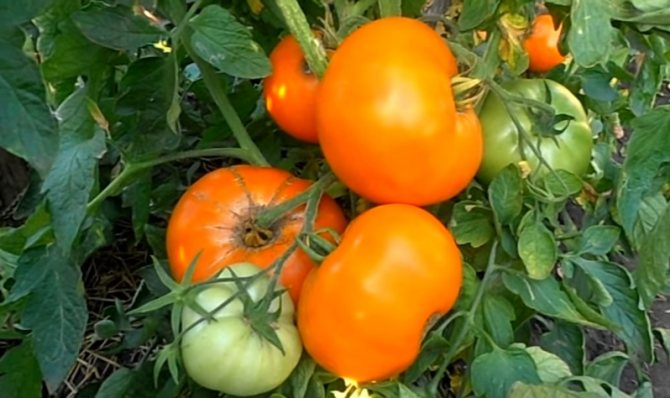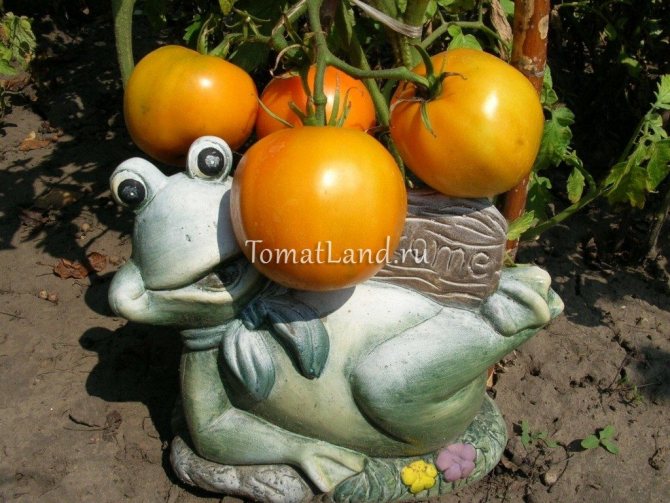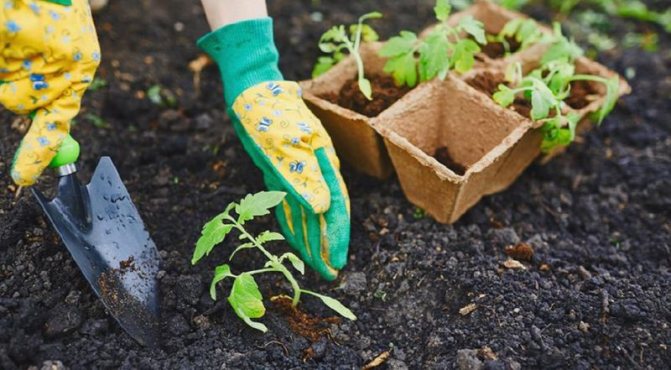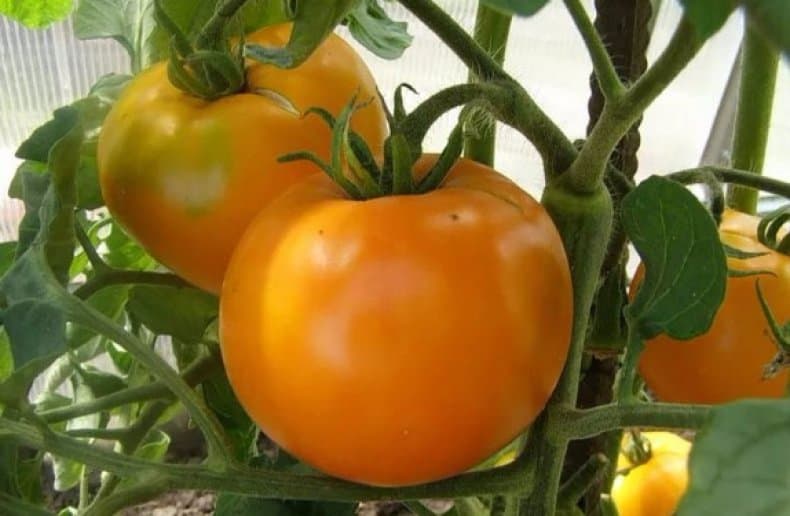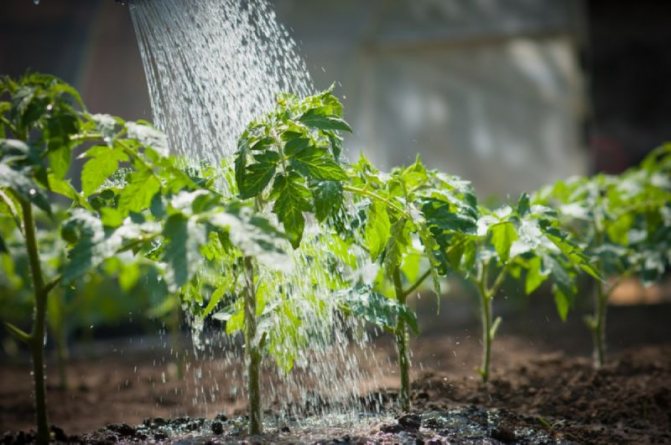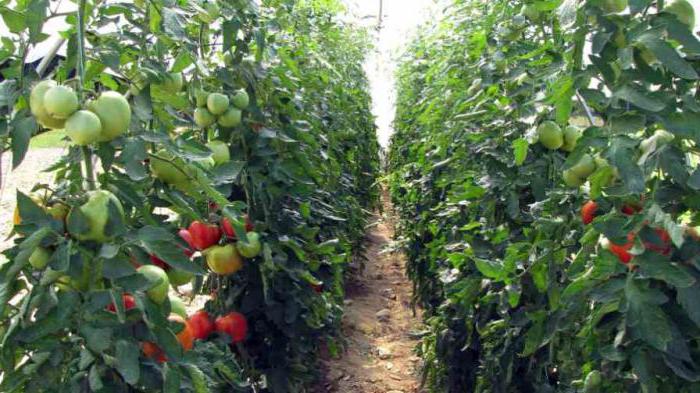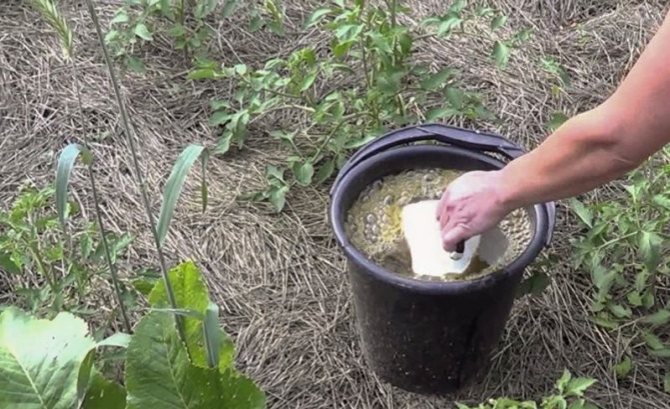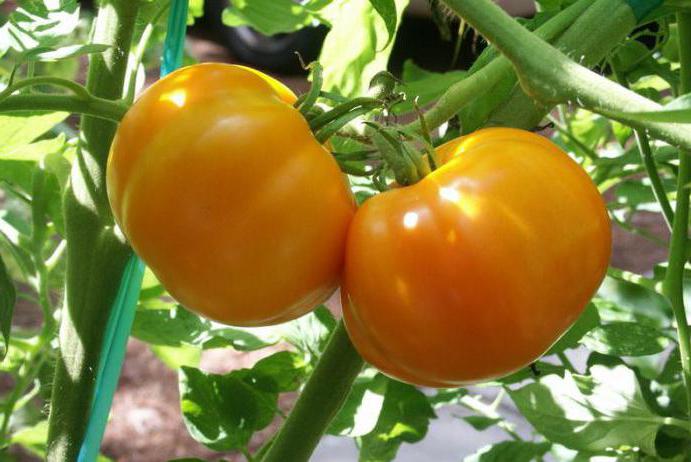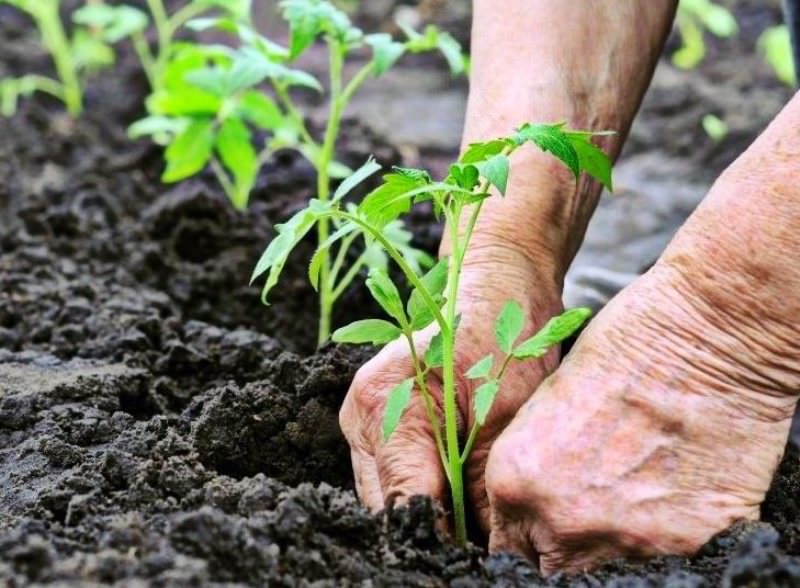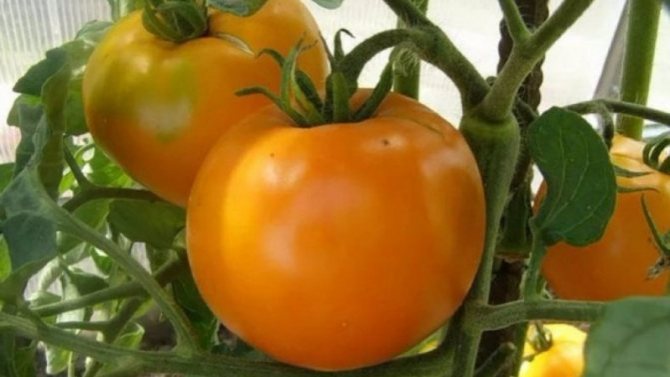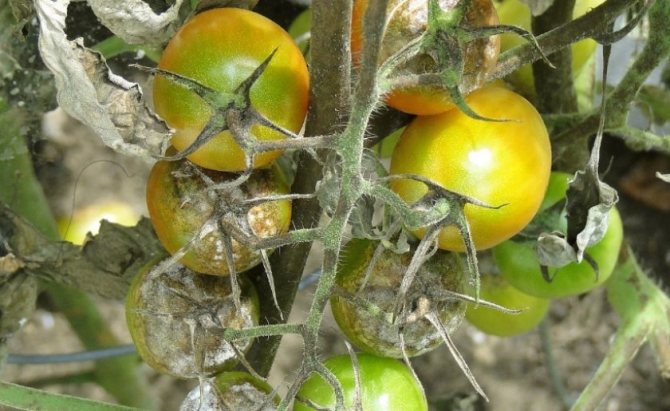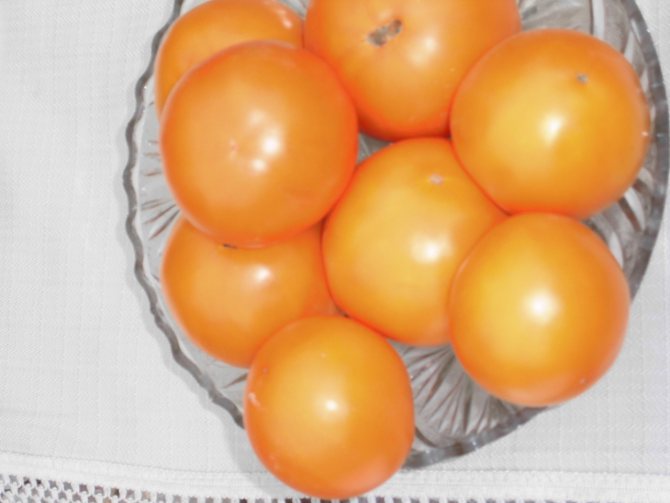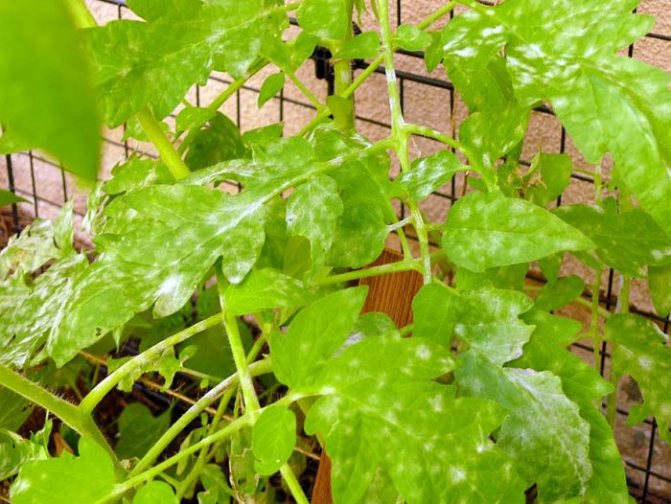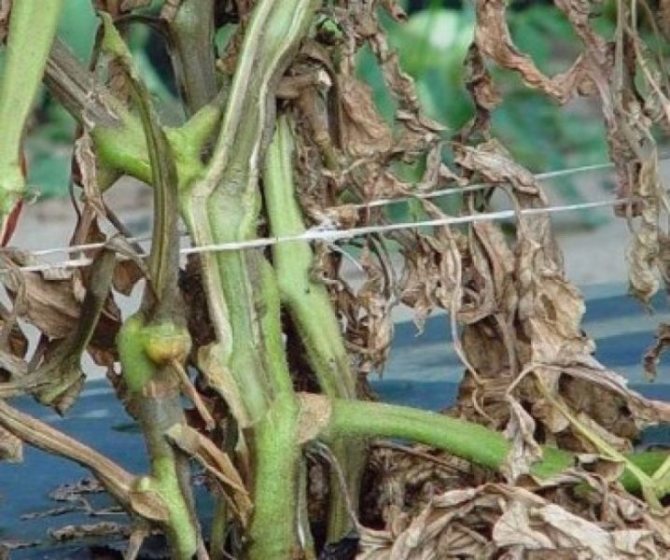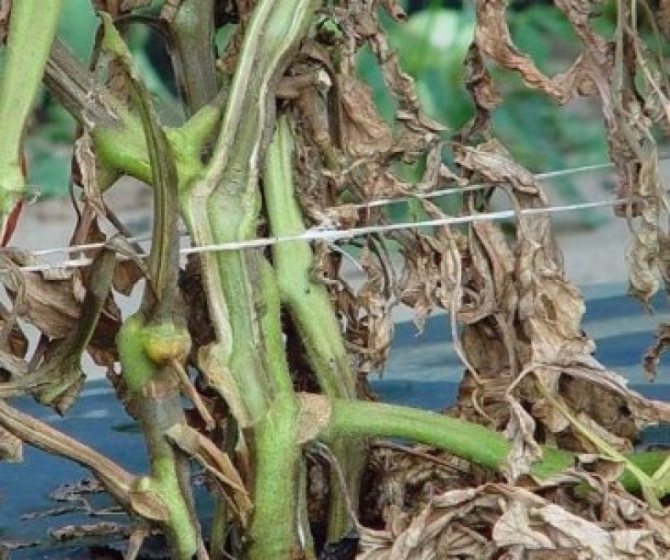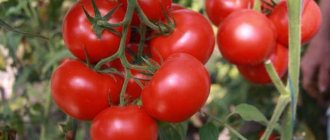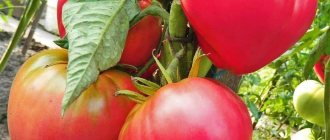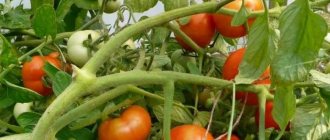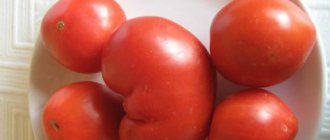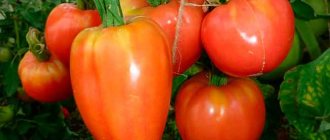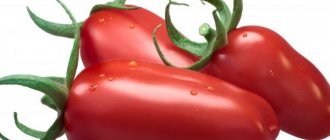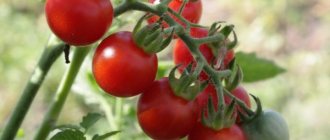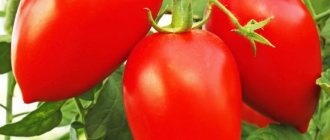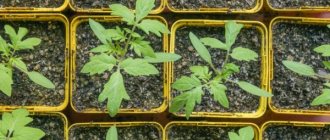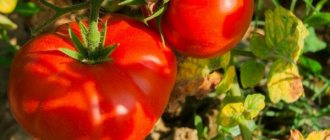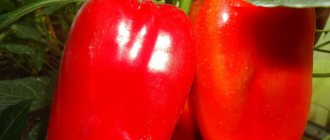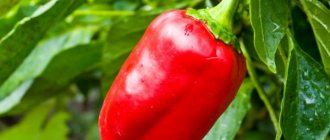It will be about one of the brightest representatives of orange tomatoes - the "Orange" variety. He has long gained popularity and love of gardeners.
I love these tomatoes for their excellent taste and brightness of the fruit. Other varietal characteristics are also high. I want to share what are the features of the variety, what is the description of the variety "Orange" and the advantages of its cultivation.
Description of the variety
Tomatoes Orange is a semi-determinate (that is, with unlimited growth) mid-season tomato variety. This variety loves warmth, so it is more suitable for greenhouses.
The vegetable is tall, occupies a smaller area than other types of tomatoes. The height of the bush sometimes reaches 150 cm, the plant branches heavily and needs support. The bushes are covered with medium-sized foliage. Inflorescences are formed above 8-9 leaflets. By type, subsequent inflorescences are divided into simple and intermediate and are formed after 2-3 leaves.
Advantages and disadvantages
The advantages of the species include:
- high productivity;
- aesthetic appeal;
- excellent taste;
- pleasant aroma;
- compactness of bushes;
- health benefits.
The fruits of the Orange variety normalize the digestive tract and can be used for baby food.
The variety also has disadvantages: the vegetable is very tender, which makes it difficult to transport and cannot be stored for a long time.... In addition, the bushes must be tied up and pinned, otherwise the yield is significantly reduced. The orange cannot be called early ripening. Fruits are harvested 100-120 days after planting seedlings in the ground, and with direct sowing, you will have to wait even longer.
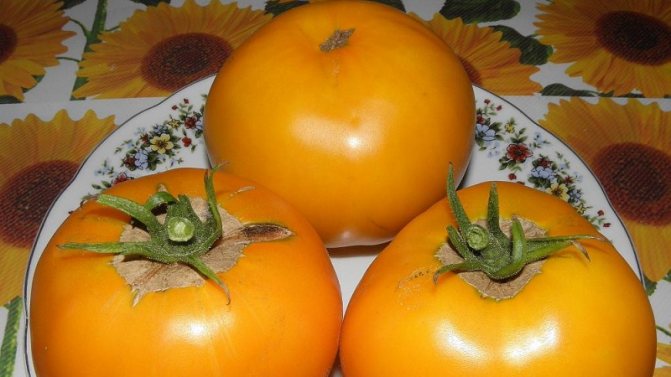
Fruit characteristics
Tomatoes are covered with an attractive bright yellow or orange skin with a few longitudinal yellow stripes. Tomatoes are round in shape, weighing 0.2-0.3 kg, and in especially favorable conditions, the mass of vegetables sometimes reaches 400 g. The skin is soft, but strong, capable of protecting the vegetable from cracking. The smell is slightly sweet and pleasant.
The pulp of tomatoes is sweet and fleshy with a slight sourness, it contains 3.2% sugar and 6.2% dry matter. When you cut a tomato, you can see 2-3 chambers inside with a small amount of seeds. Vegetables are often consumed fresh. This allows you to preserve its aroma and beneficial properties. The tomato is suitable for dietetics and allergy sufferers, as well as for making pastes and juices. The fruits are also used for preservation for the winter.
Yellow tomatoes are recommended for people who are deficient in carotene and vitamins. The vegetable normalizes the digestive tract and eliminates characteristic diseases.
On a note. Tomato variety Orange is not a hybrid, therefore, for growing crops in the future, seed material can be harvested independently.
Nuances of cultivation
Although the Orange tomato is intended for cultivation in the southern regions, it is still done everywhere. The variety grows well in temperate climates, as it is mainly cultivated in seedlings.
Before sowing, the seed is treated with a growth stimulator and disinfected in a solution of potassium permanganate. 60 days after the first shoots appear, the seedlings are ready for transplanting into open ground.
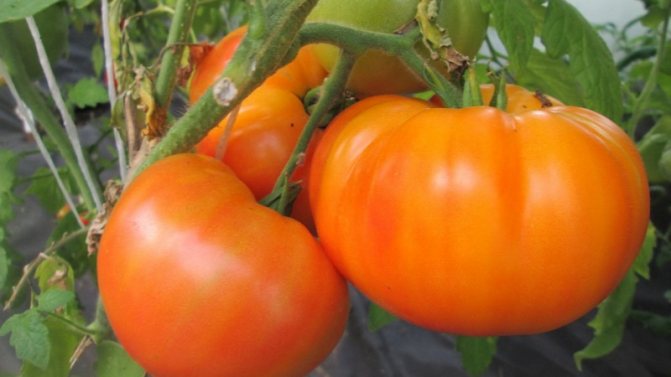

Breeding features
Thanks to domestic breeders, the tomato was bred in 2000.Since the culture was originally created for private gardeners, it is not customary to grow such tomatoes on an industrial scale.
Productivity and fruiting period
In a greenhouse, the crop yields more than in a garden bed without a film cover: up to 6-7 kg of fruits are harvested from one bush per season. 3-4 kg of tomatoes are removed from one plant that grows in the open field. From 1 sq. m vegetable growers receive up to 22 kg of tomatoes.
Full ripening of the Orange variety occurs 3-3.5 months after planting. Tomatoes ripen in stages. Fruiting in the greenhouse begins earlier than in the open field (at the end of July), and continues until mid-October.
For your information. Tomato Orange fresh is unsuitable for long-term storage.
Benefits of yellow tomatoes
Description of fruits
The usual red fruits of tomatoes are known for their beneficial properties, but yellow ones are sweeter in taste, they have more pulp. The advantages of Orange tomatoes include their low calorie content. They can be satiated quickly without sacrificing weight. They are useful for diabetics, people with large body weight, and elderly people.
By eating orange fruits, a person will feel how:
Tomato variety "Orange" is cultivated mainly through seedlings.
How to prepare the seeds:
- To increase stress resistance, the seeds are placed on the bottom shelf of the refrigerator;
- Then it is calcined in an oven at a temperature of 50 ° C, then cooled in ice water, or soaked in a weak manganese solution for 15-20 minutes. These manipulations reduce the risk of possible diseases;
- Place the seed in a damp germination cloth.
Sowing seed:
- In the first decade of March, seeds are sown for seedlings in pots or small cups;
- It is advisable to sow seeds in the acquired soil mixture. A self-prepared substrate should contain fertile soil, sand, peat and rotted humus. Such soil needs mandatory disinfection, by calcining in the oven or spilling with a weak solution of potassium permanganate;
- The seed material is deepened to a shallow depth, sprinkled with soil a little on top and tamped;
- For irrigation, use settled water and a spray bottle.
Seedling planting rules:
- Upon reaching the age of 55-60 days, seedlings are planted in a permanent place. By this time, the seedlings should have from 6 to 9 leaves, a well-developed root system, a height of about 20-25 cm;
- For growing tomatoes, give preference to loamy, well-fertilized soil. Plant in beds after zucchini, cucumbers, parsley, dill, carrots, cauliflower;
- When transplanting, adhere to the scheme - one tomato bush per area 40x50 cm;
- The planted bushes are watered. Garden beds in open ground are covered with plastic wrap until stable warm weather sets in.
Growing tomatoes
To obtain a high-quality harvest, you should take care of the correct preparation of the soil and the plant itself. Tomato variety Orange is grown both by seedlings and by direct sowing in open ground.
On a note. Seed material before sowing must be warmed up at a temperature of 50 ° C and cooled in cold water or soaked in a slightly pink solution of potassium permanganate for 20-30 minutes. This will strengthen the plant's immunity and help to avoid the occurrence of diseases and pests.
Landing
The first days of March are the best time to plant the variety. The drain is placed on the bottom of the container, then covered with a substrate. Organic fertilizers are also added. In order for the seedlings to sprout faster, the container is placed in a warm place. After 60 days, the bushes are transferred to a permanent place of growth.
If you decide to use the direct planting method (sow tomato seeds directly to the garden), this should be done in early May, in sunny and wind-protected places. With such a planting, you should not count on a quick harvest: the fruits will ripen much longer.
Compliance with the rules of agricultural technology is important for the cultivation of any crop. Knowing some of the nuances will help you achieve high yields without much difficulty.
Tomatoes are watered as the soil dries up, but no more than 2-3 times a week. 3-4 liters of water are consumed per bush. Do not forget that the culture is watered exclusively at the root. It is impossible to irrigate under the scorching sun, it is better to choose morning or evening time for this.
Between water procedures, the soil around the bushes is necessarily loosened, at the same time ridding them of parasitic weeds, which are not as harmless as they seem at first glance. If you do not remove weeds on time, all fertilizing, watering and other measures for caring for tomatoes will be useless. The plant will wither and ache, and the unloved "weeds" will turn green, grow and flourish.
During the growing season, the fruiting crop is fed at least three times. It is better to use organic fertilizers as fertilizers. A week after planting the plants in open ground, the first feeding with manure is performed at the rate of 1 kg of fertilizer per 1 liter of water. Next time, fertilizing is applied during the flowering period of 2-3 fruit brushes.
Gardeners also recommend using manure, but with the addition of 2-3 g of potassium permanganate and copper sulfate per 10 liters of the mixture. The last time the plants are fertilized during the ripening of the first fruits: manure dissolved in water (1: 1) is also used.
On a note. Tomatoes contain a large amount of nutrients. Regular consumption of tomatoes reduces the risk of depression and cancer. Another big plus of these fruits is that 100 g of a vegetable contains only 22 kcal.
How to make Bordeaux liquid
Those who planted tomatoes know that there are two components in the Bordeaux liquid: a solution of copper sulfate and slaked lime. One percent antifungal mixture is prepared from one hundred grams of copper sulfate and 120 grams of lime milk. Dissolve each ingredient in one liter of hot water separately. Then topped up to five liters each container, and the parts are mixed, having previously filtered.
It will be correct to pour the solution with copper into the limestone. In this case, the liquid is stirred. So that the solution does not burn the leaves of the vegetable, they check the correctness of its concentration - an iron nail is dipped into it. Red plaque on the object means more copper sulfate than it should be. And so lime is added until the sediment disappears.
See also
Description and characteristics of the tomato variety EmpressRead
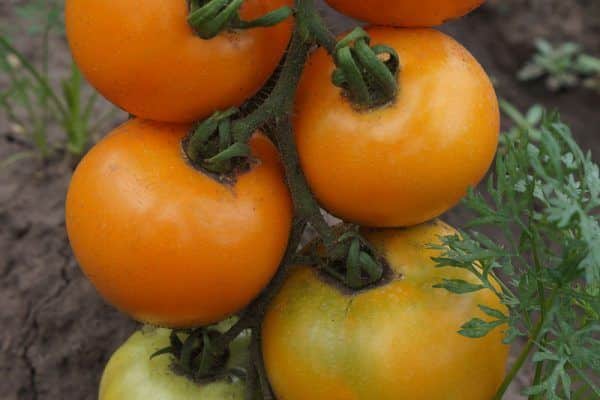

Use the prepared liquid immediately, treating tomatoes liberally in dry weather. For ten square meters of planting, two liters of solution are enough.
The efficiency of the liquid is high; it stays on the leaves and stems of the plant for a long time. And the Pear Orange variety will be protected from pathogenic fungi and viruses.
Growing conditions
Tomatoes of the Orange variety need constant pinching. The shoots are pinched as they appear, so that they do not take away the vitality of the plant. Most often, the bush is formed into 1-2 stems. A month before the end of the growing season, the tops of the plant should be pinched and small inflorescences removed.
Diseases and pests
The variety has strong immunity, but under unfavorable conditions, diseases sometimes affect it. To prevent the risk of morbidity, there are certain preventive measures.
For example, if there is a risk of mosaic infestation, it is better to use seeds from a year ago for planting.And if there is a likelihood of fusarium disease, prevention is carried out in stages, in the first month after disembarkation. For this, "Trichodermin" is used.
The most dangerous disease is the bacterial wilting of the plant. Affected seedlings die within a few days. Harmful microorganisms appear when seeds have not been properly processed before planting. For treatment, the plant must be treated with Fitolavin-300 solution in time. Sick and dead bushes are removed and burned to avoid contamination of neighboring plants.
Breeders claim that Orange is less prone to late blight than other varieties. However, for prevention, it is better to treat bushes with effective means:
Copper preparations will help protect the culture from fungal diseases.
Orange is a tall variety, which entails certain risks of morbidity. Tomatoes start to rot if they come into contact with the ground. The installation of a trellis system will help to avoid this; it will also be easy to process fruits from small pests on it.
Insects often parasitize the fetus. To avoid this, the bushes are treated with appropriate pesticides, soapy water (100 g of substance per 10 liters of water) or garlic infusion in the same proportion (garlic must be suppressed and the mixture allowed to brew for one day).
For your information. Despite the strong immunity of Orange, it is still not worth ignoring preventive measures, because every year viruses mutate, adapting to new blockers and learning to bypass them.
The process of growing tomatoes just described may seem daunting. However, the correct formation of the bush forms a rich tomato ovary. A one and a half meter bush is able to give a bountiful harvest and at the same time save space on the site. Beautiful orange fruits with juicy pulp will decorate the garden and delight you with taste. Tomato Orange is a worthy competitor to the traditional red tomato.
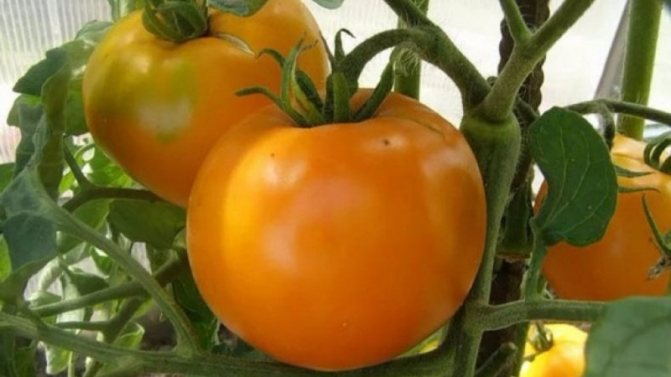

Why tomatoes do not bear fruit
- Unbalanced diet. Plants are very responsive to feeding, so an excess of nitrogen in the soil can lead to an increase in green mass, which distracts it from flowering. Nitrogen is able to affect the change in the flower, it becomes large, but the staminate cone is completely absent. This phenomenon is especially observed in dry and hot weather.
- Lack of carbon nutrition. During prolonged hot weather, the air in the greenhouse must be saturated with carbon for photosynthesis to take place faster. To do this, it is necessary to put a container for fermentation of manure in the greenhouse. Fill half of the container with fresh manure or chicken droppings, in extreme cases, you can use cut grass. Fill everything with water. This liquid increases the plant's resistance to extreme conditions and regulates the temperature in the greenhouse.
- Bad seed. Sometimes even their seeds can fail if they are incorrectly collected and stored. From year to year, collecting seeds from a tomato, you can deprive plants of genetic resistance to infections and shrinking fruits, which leads to the degeneration of the variety. Therefore, you should periodically buy seeds from agricultural firms.
Reviews of gardeners
Most summer residents have long been familiar with Orange tomatoes and are actively growing them. They emit a unique fruit taste and high yield. Also, the variety makes it possible to use these vegetables for people who are allergic to red tomatoes. Reviews of tomatoes Orange are mostly good.
Tatiana, Volgograd: “I have been growing Orange for three years in a row. The description of the variety and the photo on the package with seeds convinced me that this species is worthy of attention. I liked the tomatoes for their unsurpassed taste. Before that, I really liked the Pink Giant, but after preparing the salad with Orange tomatoes, my whole family stopped recognizing other tomatoes. The grandchildren are asking them to prepare "red-haired" juice, they really liked it. I grow a lot of tomatoes: enough for food, and for sale, and for conservation. I recommend this variety to everyone. "
Evgeniy, Tula: “I learned about Orange from my neighbor in the country. He once treated me at a gathering, after which I immediately asked him for seeds. I do not let anyone near the tomatoes, I grow them myself. When my wife saw yellow tomatoes in the garden, she laughed that I was growing oranges. The fruits were liked for their taste, aroma, structure and large size. He could not pull his wife by the ears. I would not say that the harvest is greater than that of other varieties, but not less. I am satisfied, I will continue to grow ”.
Svetlana, Ivanovo: “We have always grown tomatoes in the country. With the advent of the granddaughter, they began to plant yellow varieties, since she has diathesis and an allergy to everything red, and the child loves tomatoes and picks them right from the garden - you can't keep track of them. The whole family really liked the Orange variety. These tomatoes do not cause any reaction in the granddaughter, except for a positive one, even if she drinks the juice. In general, I can say that the variety is very good. This is a worthy replacement for red tomatoes. They don't need special care. "
Soil preparation
For growing Orange Blue tomatoes in the open field, it is advisable to choose areas that get enough light and there is protection from the winds. Because the plants are tall and can break off. When choosing a soil, preference should be given to light, breathable, which has a weak acidity or a neutral environment.
Note! Sandy loam will be an excellent choice for growing Orange Blue tomatoes.
As for the predecessors, it is advisable to choose those areas where onions, carrots, zucchini or cabbage grew. Growing tomatoes of any kind is not recommended on the spot after other tomatoes, peppers, eggplants.
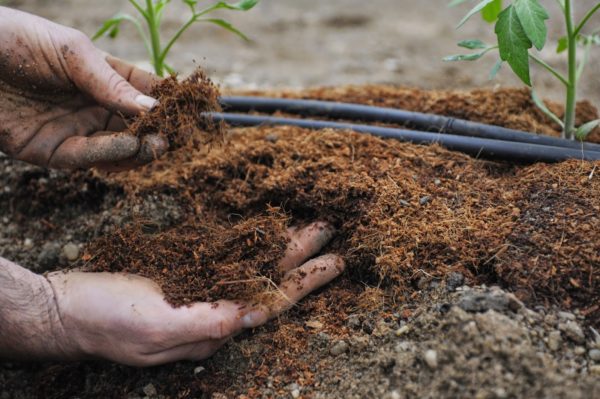

For planting seed, you can use both ready-made soil and prepare it yourself. To do this, mix the following components:
- Peat - take in the amount of 7 parts of the total volume of the soil.
- Sod land - 1 part.
- Wood sawdust - 1/2 part.
You can also use a different recipe. It uses peat, humus and river sand. This option is perfect for those who live near the river.
When using any recipe, all components are mixed and the finished substrate is stored outside in the winter. It is necessary that it freeze through, this will ensure the death of all harmful microorganisms.
In spring, the soil is brought in, warmed up and laid out in containers or other containers for planting. For better germination and growth of seedlings, it is advisable to fertilize the land. Superphosphate and ammonium nitrate are considered excellent options.
Open ground also needs to be fertilized. It is carefully dug up, organic and mineral compounds are added. These can be phosphorus, potassium, nitrogen and wood ash. All funds are used carefully, following specific instructions.
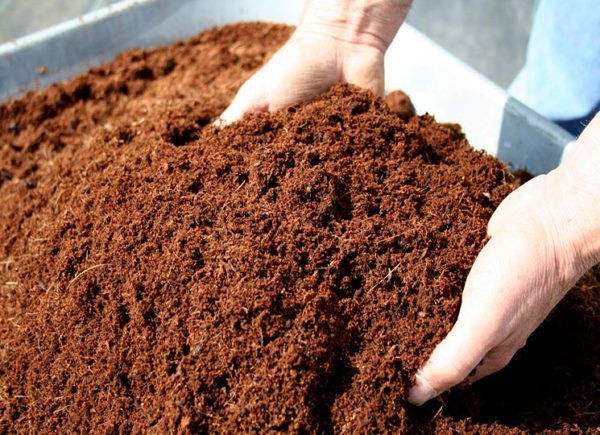

Description and characteristics of the tomato variety Orange, reviews, photos
This is a mid-season, indeterminate (according to the state register), medium-sized tomato variety for greenhouses and open ground.
A bush up to 1.5 meters high, requires a garter to a support and pinning. The best results were obtained when forming a 2-stem plant. With this formation, 1 stepson is left growing under the first flower brush. The leaf of this tomato is medium in size, green. The inflorescence is of a simple and intermediate type. The first inflorescence is laid above 8-9 leaves, the subsequent ones - every 3 leaves.
The main qualities of the fruit


photo by Maya Zhuravel
Tomatoes are round, dense, at the stage of maturity, yellow-orange in color, weighing 200-250 grams (up to 400 g), sweet, fleshy, pleasant taste with sourness, aromatic. Do not crack. They are suitable both for fresh consumption and for canning, making juices, sauces. The dry matter content in the fruit juice is 6.2%, the total sugar is 3.2%.
Variety value: stable yield, uniformity of fruits (no clumsy) and their high taste.
Tomato variety Orange was included in 2000 in the State Register for the Russian Federation for garden plots, home gardens and small farms for growing in open ground and under film shelters.
Harvesting and storage
Orange tomatoes are highly appreciated by consumers in terms of gastronomic qualities. Juicy, sweet, fleshy fruits with a low content of seeds are eaten fresh, sliced or as a component and decoration of vegetable salad with pleasure. Small tomatoes are pickled and rolled in their own juice for the winter, used in various preparations. In glass jars, these vegetables look very attractive.
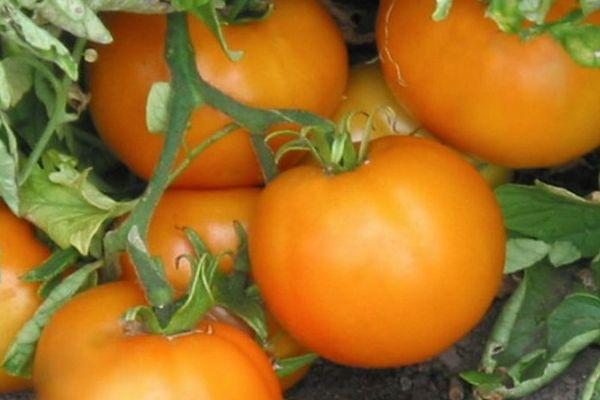

Growing exotic tomatoes called Orange is possible even for an inexperienced gardener. With minimal care, you can achieve a large number of fruits with excellent taste, worthy of the praise of picky gourmets. Seasoned gardeners are attracted by the bright large tomatoes that decorate the site.
Features of growing, planting and care
We recommend sowing seeds of this variety of tomatoes for seedlings 60-65 days before the intended planting in the ground. Seedling picking at the stage of 2 true leaves. When transplanting seedlings to a permanent place of 1 sq. It is recommended to place up to 4 plants per meter of the prepared area. Landing scheme: 50 x 40 cm.
Further care for tomatoes consists of timely watering, removing weeds, feeding, pinching and preventive measures to protect the crop from diseases and pests.
How to grow tomato seedlings yourself
Tomato variety Orange is grown mainly in seedlings.
Sowing time
The sowing date depends on the climate of the region and the cultivation method (greenhouse or open field). Seedlings of this thermophilic variety should be planted when stable warm weather has come and the threat of frost has passed, and the soil temperature has warmed up to + 12 ° C. In the southern regions, this time can come in the 10th of April, in the Central Black Earth region - in the 10th of May, and in the middle lane - from 10 June. You can view historical temperature statistics for your locations and select a suitable date.
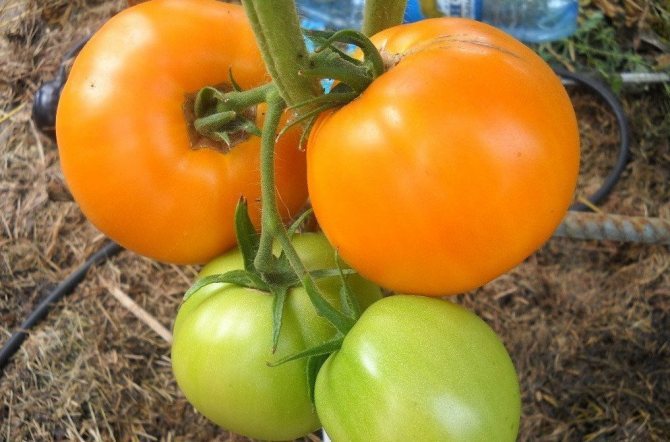

Seedlings of mid-season tomato varieties are planted on beds at the age of 60–65 days from the emergence of shoots. Taking into account the time for the emergence of seedlings in 5-7 days with the countdown, it can be determined that for growing seedlings in open ground in the south, tomato seeds of the Orange variety can be sown in early February, in the center of the Black Earth region - at the very beginning of March, and for the middle lane - in early April. Since it makes sense to plant this variety in a greenhouse, the planting time can be accelerated by several weeks.
Soil mix
For seedlings, the easiest way is to purchase ready-made soil at retail outlets. But if you wish, you can make the substrate yourself. It should be borne in mind that it must be nutritious and well permeable, with an acidity in the range of 6.2-6.8 pH.
Important! Homemade soil mixture should be disinfected - hold in the oven, pour boiling water or potassium permanganate solution.
The soil mixture can be prepared as follows: mix 1 part of the soil from the beds on which the nightshade crops did not grow, 2 parts of non-acidic peat, 1 part of humus and ½ part of sand. If the peat is of high acidity, then ash must be added to the mixture. It will be good to add a little superphosphate to this soil.
Growing tank
Containers for obtaining tomato seedlings can be used in different ways:
- Boxes. Can be used many times, easy to move and transport. They save space on the window. Plants from them should be planted carefully so as not to damage the roots.
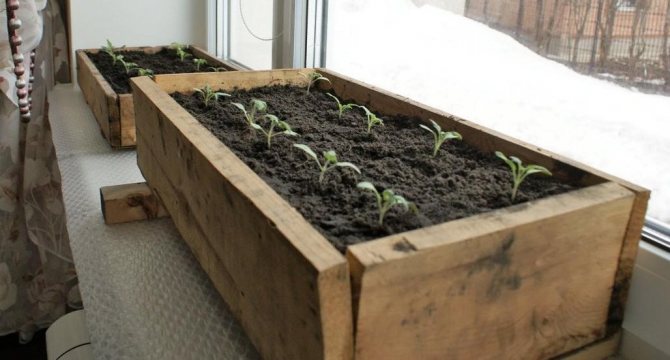

- Peat tablets and cups. In them, the root system of tomatoes feels most comfortable.They need moisture control as they dry out faster than other containers. They need a pallet and are expensive. Convenient when disembarking.
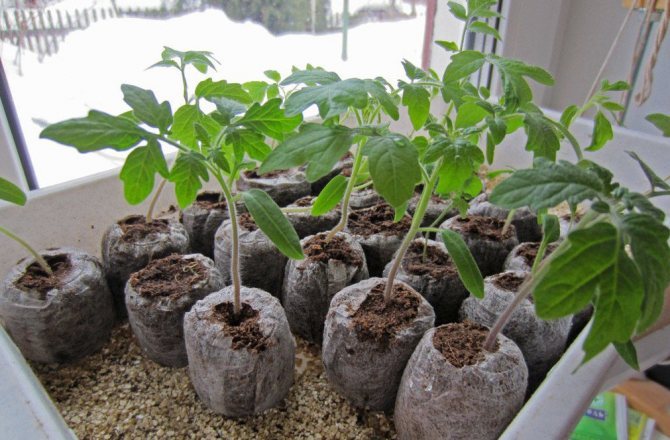

- Seedling pots. Reusable containers that take up a lot of space and are difficult to transport. Care must be taken when removing the plant from it.
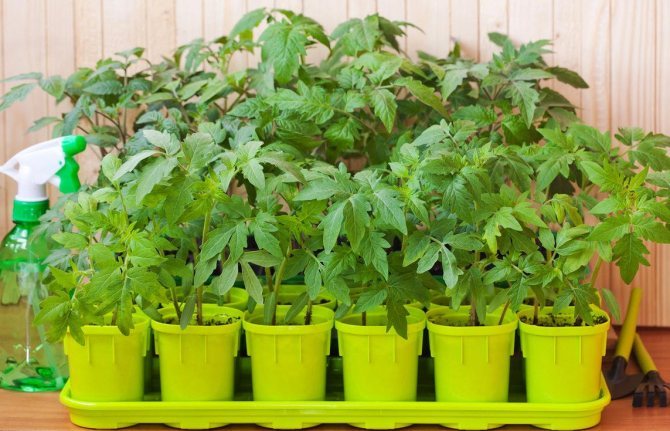

- Plastic cassettes. They require a pallet and care when planting seedlings. Poorly transported.
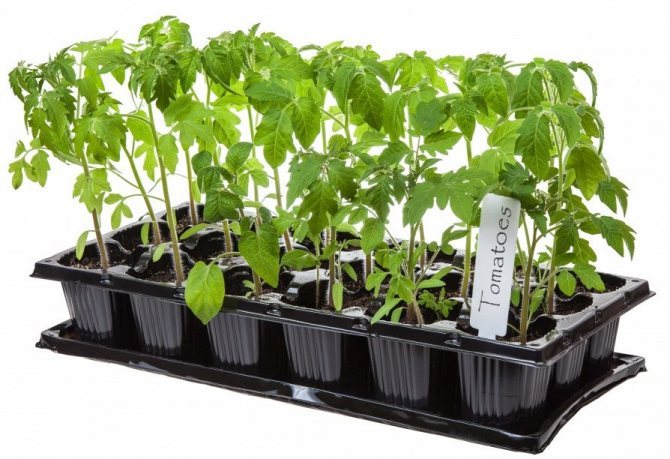

- Disposable plastic tableware. It can be purchased or made yourself from plastic bottles.
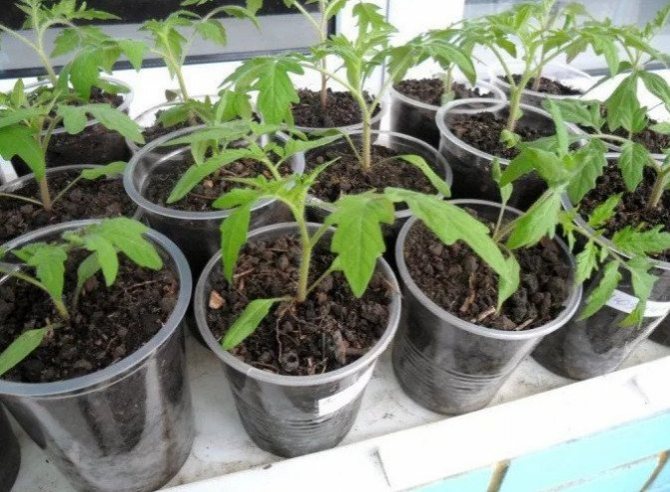

For tomatoes, choose containers with a height of 10-17 cm and a volume of 1 liter. They must all have drainage holes. If they are not there, then you should make them yourself.
Seed preparation
It is recommended to calibrate your own seeds - immerse them for 10 minutes in a saline solution (1 tablespoon of salt per 1 liter of water). Then remove the floating specimens, and use the seed material that has sunk to the bottom for planting.
Seeds should be disinfected before planting. Usually for this they are soaked for 15–20 minutes in a light solution of potassium permanganate (1 g per 100 ml of water). Then they need to be rinsed well and dried.
Seeds can be stimulated to grow by soaking for 12 hours in Epina solution or aloe juice diluted in water in a 1: 1 ratio.
Did you know? Tomatoes were brought to Eurasia from South America by the Spaniards in the 16th century. Their name comes from the Aztec word "tomatl", which means "large berry".
Sowing seeds
Before planting, the soil in the prepared dishes is moistened. When growing seedlings without diving, 1-2 seeds are planted in separate containers to a depth of about 1 cm.
In the seedling container for subsequent diving, grooves are made 1 cm deep at a distance of 4 cm from each other. Processed seeds are placed in them with an interval of 1-2 cm.
Then the plantings are carefully sprinkled with earth, moistened a little again and covered with a film on top. The container with crops is transferred to a dark, warm (+ 25 ... + 30 ° С) place. Usually they are placed near the heating battery. Every day, planting is slightly ventilated and the moisture content of the soil is controlled.
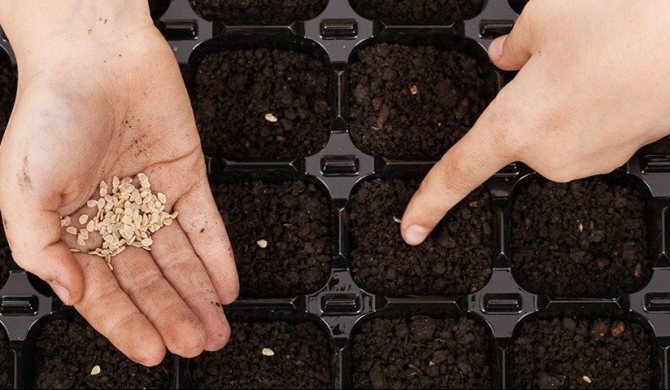

Tomatoes Orange on video
If you have grown Orange tomatoes, please write whether you like them or not. What was the yield and taste of the fruit in your climatic conditions? How do you rate the resistance of this variety to diseases? Briefly describe the advantages and disadvantages of this tomato in your opinion. If possible, attach a photo of the entire bush or individual fruits grown by you to the comment. Thank you!
Your reviews about the Orange tomato and additions to the description will help many gardeners evaluate this variety more objectively and decide whether it is worth planting it or not.
Tomato Orange is a good choice for fans of this vegetable. The unconventional appearance of this variety has made it a favorite among yellow tomatoes.
For its excellent taste, generous harvests and unusual orange color, he managed to fall in love with many gardeners, connoisseurs of tomatoes.
Variety reviews from those who planted
During its existence, the tomato variety "Orange" has established itself only from the best side and has earned the respect of the majority of gardeners. Gardeners who have already grown this variety note its unpretentious care, high stable yield, as well as bright and large tomatoes. For lovers of new interesting varieties, tomato "Orange" will be a real find.
Review of the gardener: The tomato variety "Orange" perfectly combines the taste, benefits and appearance of the fruit. Growing tasty tomato fruits is not difficult. For exotic lovers, they will bring real aesthetic and gustatory pleasure.
Tomatoes can be consumed by children and adults, as well as people suffering from an allergic reaction to red-fruited varieties. The variety is recommended for both beginners and experienced growers.Even with minimal maintenance, you can get a high quality orange tomato crop.
Description of tomato variety Orange
Tomato Orange is a varietal, not a hybrid. It is important. Seeds can be collected from ripe fruits and prepared for planting next year, which will save you from unnecessary material costs.
- The tomato bush grows up to 1.6 m in height in the open field, in the greenhouse - higher. Not too sprawling. Plant of semi-determinant type (unlimited growth).
- The stems are thick and strong. Tomato Orange is formed into 1–2 stems, which need strong support, since the fruits are large and heavy.
- The foliage is sparse. Leaves are medium in size, dark green in color.
- Unpretentious flowers are combined in panicles of 2–5 pieces. The initial flower cluster is tied over 6–7 leaves.
- The technical term for growing orange tomato is 3–3.5 months (from sowing seeds to ripening of ripe tomatoes).
Description of fruits
Bright, elegant bushes not only decorate the backyard, but also guarantee the supply of healthy and tasty tomatoes.
- The fruits of the Orange tomato are rather large, round, leveled, weighty (the weight of one tomato is 250–350 g), sometimes up to 450 g.
- The color ranges from yellow to various shades of orange. In general, tomato fruits resemble orange in shape and color, most likely hence the name of the variety.
- Fleshy tomatoes contain large amounts of beta-keratin, are very sweet, pleasant to the taste, with a delicate aroma.
- The tomato variety Orange has very hard fruits. Even after lying on the windowsill for a month (when the seeds are being harvested), the tomatoes remained firm.
- Inside the fruits, there is very juicy pulp and very few seeds, which makes it a little difficult to collect planting material.
Yield
From one bush harvested from 3 to 5 kg of the crop. The yield from 1 m2 is up to 20 kg.
Today tomato "Orange" is widely cultivated in the Central and southern regions of Russia, both in closed and unprotected ground. The cultivar is thermophilic and reacts sharply to changes in the weather. Therefore, it is optimal to grow a tomato in greenhouses. Cultivation in the open field is permissible only in the southern regions.
The variety is famous for its bountiful harvests. The mass of one tomato is 210-400 grams, in a brush up to 6 pieces. Tomatoes are planted quite rarely, according to the 50x50 cm scheme, therefore 2-3 bushes grow on 1m², which give 15-20 kg of yield per square of area.
Tomato characteristic
Tomato Orange is the result of the work of domestic selection. The variety is relatively young, appeared on the market in 2000. And a record was made in the State Register about a new achievement of the work of Russian breeders - the creation of a new variety of tomatoes.
- As indicated by vegetable growers in the description of Orange tomatoes, they are intended for cultivation in the central and southern regions of the country, under film cover and in unprotected ground.
- Tomatoes were supposed to be grown on small farms and private farms, but not on an industrial scale.
In the description of the tomato variety Orange, manufacturers positioned it:
- mid-season;
- fruitful;
- not too susceptible to nightshade diseases;
- with excellent taste.
Productivity and fruiting
Fully orange tomatoes ripen in 3–3.5 months. Tomatoes ripen in stages. Fruiting in the greenhouse begins at the end of July (earlier than in the open field) and continues almost until the end of October.
Tomato yields in a greenhouse are richer than in a garden bed without a film cover: gardeners remove up to 6-7 kg of tomatoes from one bush per season, or even more. From a garden bed without shelter, 3-4 kg are collected from one plant. From 1 sq. m of area, vegetable growers receive up to 23 kg of vegetables.
Scope of the fruit
Orange tomatoes are delicious, sweet. They are used:
- in salads (fresh);
- make sauces, pastes, juices;
- canned for the winter.
The variety is suitable for eating in any form due to its pleasant taste and rich tomato aroma.
Disease and pest resistance
The creators of the variety declared its resistance to diseases inherent in the culture. Judging by the numerous reviews of gardeners about the Orange tomato, tomatoes are really slightly susceptible to some of them:
- top rot;
- late blight;
- bacterial wilting.
The most dangerous enemy for tomatoes Orange is the Colorado potato beetle. He loves all varieties of tomatoes. Rodents, slugs can also ruin the crop if you do not take action.
Advantages and disadvantages of the variety
Thanks to its excellent taste, unpretentiousness in care, the Orange tomato variety has fallen in love with many gardeners.
Not a hybrid.
Short storage fresh.
Produces a stable and generous harvest.
Disease resistant culture.
Beautiful appearance, unusual color, great taste.
Unlimited use. Hypoallergenic. Suitable for children.
Advantages and disadvantages
Pros of tomato varieties Orange:
- stable high yields;
- citrus appearance and large fruit;
- aroma and sugar content of fruits;
- resistance to late blight;
- take up little space;
- medicinal characteristics (tomatoes normalize the work of the gastrointestinal tract, compensate for the lack of keratin, are suitable for dietary nutrition).
Cons of Orange:
- not suitable for storage;
- low level of transportability;
- exactingness to care: garter, pinching.
See also
Description of the tomato variety Polbig, its characteristics and productivity
To read
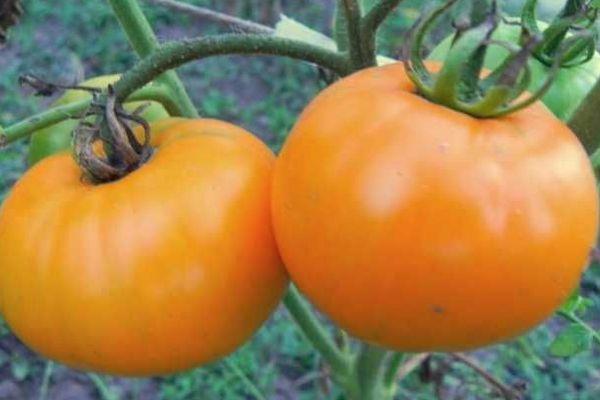

Growing rules
Tomato Orange is grown both in greenhouses and in unprotected soil. The variety is intended for breeding in almost all regions. But, according to gardeners who have experience in growing Orange tomatoes, it is advisable to plant vegetables in central Russia in a greenhouse. And in the southern regions of the country, Orange tomatoes grow in unprotected soil. Therefore, vegetables are planted in the greenhouse with seedlings, in the south - with seeds in open ground.
Planting seedlings
The future harvest depends on the planting material. It can be prepared personally from ripe fruits of the previous harvest or bought in a store. Sowing seeds will require separate plastic cups or a common container. They are sown at the very beginning of March, 2 months before planting in a permanent growing place.
- First, the seeds are soaked for a quarter of an hour in a weak solution of potassium permanganate (potassium permanganate). For this purpose, they are wrapped in gauze cloth and dipped in a solution. You can make a pink water-based liquid from melted snow, it is called "alive".
- Then the seeds must be "hardened". To do this, they are placed in a refrigerator overnight, and during the day they are removed and stored at room temperature. The hardening procedure lasts at least 5 days.
The soil for seedlings also requires pre-sowing preparation if the soil is prepared in the fall from your own garden. To avoid unnecessary hassle, you can buy ready-made seedling soil in the store.
But if the land is from the garden, there is more than one way of disinfection:
- spill it with boiling water;
- ignite on a baking sheet in the oven.
The seeds are buried 1–2 cm into the soil and covered with foil. Put away in a warm place. When the soil dries up, you can spray it with a pulverizer.
On the 4-6th day, seedlings will appear. You can transfer them to the windowsill.
- Water the seedlings no more than 1 time a week, when the soil surface becomes dry.
- The first feeding of tomato seedlings Orange (with mineral fertilizers containing nitrogen and potassium) is applied 7–8 days after the pick; the second - before flowering.
- For tomatoes, it is advisable to pick the pick twice. The first - when 2-3 of its leaves appear; second - when it becomes noticeable that the roots are cramped.
It is advisable to feed in warm weather outside the window, otherwise the seedlings may get sick.
Tomato transplant
Orange tomatoes are transferred to the greenhouse not earlier than 2 months after sowing the seeds, in late May - early June.Seedlings are planted in open ground when the air temperature is at least 16–17 ° С, when there is confidence that night frosts will not return anymore.
- A place for planting seedlings is dug up, loosened, organic fertilizers are applied.
- Dig a hole into which ash is poured (to prevent diseases).
- The plant is lowered into the hole, the roots are spread and added dropwise. The gaps between the bushes should be at least 60 cm. It is advisable to plant seedlings after lunch.
Within 3-5 days, the plant does not need to be touched, let them take root in a new place.
Tomato follow-up care
Tomatoes of the Orange variety are not too demanding in care, but for a rich harvest, some agrotechnical techniques are still required.
- water on time;
- loosen, remove weeds;
- mulch the soil;
- feed plants;
- fight pests and diseases;
- tie up and remove stepchildren.
Proper care of tomatoes and the care of gardeners will allow you to get a rich harvest of selected orange tomatoes: tasty and healthy.
- Watering orange tomatoes is enough twice a week. Do not allow the soil to dry out.
- Since the fruits of tomatoes are large, the plants must be tied to a reliable support. There are many stepsons, they must be removed in a timely manner.
- Tomatoes are fed Orange at least 3 times per season. The first feeding is carried out 10-12 days after planting. The second time is when tying the brushes. The third dressing is applied a few days before harvest.
- Mulching helps to quickly process nutrients, retains moisture and prevents weeds from growing.
Mainly fertilized with organic matter: grass or manure. Dilute 1 kg of manure in a bucket of water and leave for 10 days. It turns out a working solution, which is poured over tomatoes at the root (1 liter per watering can).
Planting seedlings
It is necessary to transplant seedlings of the Orange variety into the ground at the end of May. This is due to the fact that plants need warm soil. The minimum temperature at which you can start planting is + 15 ° C. The place where the seedlings will be planted is dug up in advance. After that, the soil is fed with organic fertilizers and watered with warm water.
The transplanting process is carried out 3 weeks after the completion of these actions, so that the earth has time to sink. Dig holes according to the scheme 50x80 cm and pour 300 g of wood ash into them. This will ensure the prevention of diseases and parasites that often affect tomato bushes.
Dip the seedlings into the dug hole and spread their roots. Fill the hole with soil so that no voids form in the root system. Seedlings are planted after lunch, when there is no hot sun, otherwise the bushes will die due to lack of moisture, which quickly evaporates under the influence of sunlight.
():
They try to transplant tomato seedlings so as not to destroy the clod of earth in which the roots are located.
Pest and disease control
In order for Orange tomatoes to be less exposed to diseases inherent in nightshade crops, it is necessary to carry out a number of preventive measures even in the seedling phase. Until the tomatoes began to bear fruit.
Different types of rot:
These diseases can be avoided if you properly care for tomatoes: water, feed, create the necessary temperature regime.
But for the prevention of late blight, it is advisable to spray with fungicidal preparations.
- The first time they sprayed Orange tomato bushes a week after planting in the ground.
- The last spraying is carried out at least 3 weeks before harvesting the fruits.
In the fight against the most terrible enemy of tomatoes - the Colorado potato beetle, the old grandfather's method will help - picking by hand. If there are still a lot of beetles, you will have to use chemicals from the store. Whiteflies, slugs and other vermin - chemistry fights them better.
Care
Top dressing of tomatoes "Orange" is carried out three times a season, at the beginning the nitrogen rate is increased in order to provoke a powerful growth, the bushes are watered with infusion of organic matter (nettle, fresh manure). At the beginning of fruit ripening, nitrogen is excluded, potassium-phosphorus mineral mixtures are added.
The soil is loosened regularly, the bushes are piled up to a height of 15 cm. Watering is recommended sub-root, slow, so that moisture is well absorbed into the soil. To form a bush, it is necessary to pinch at least 1 time in 2 weeks. When the fruits ripen, they are harvested to ¼ of the green mass for better ventilation of the bush, systematic ripening of the fruits.

